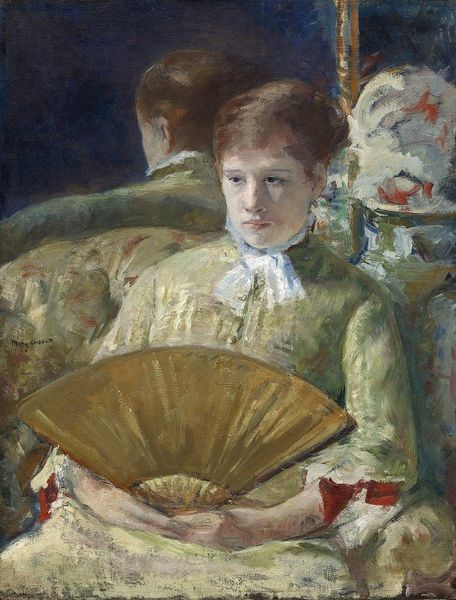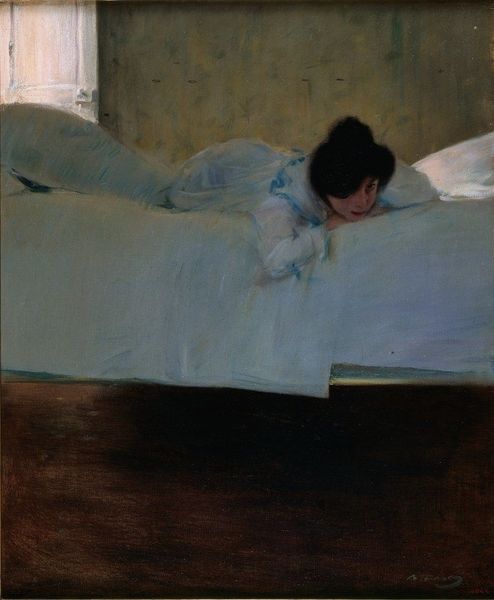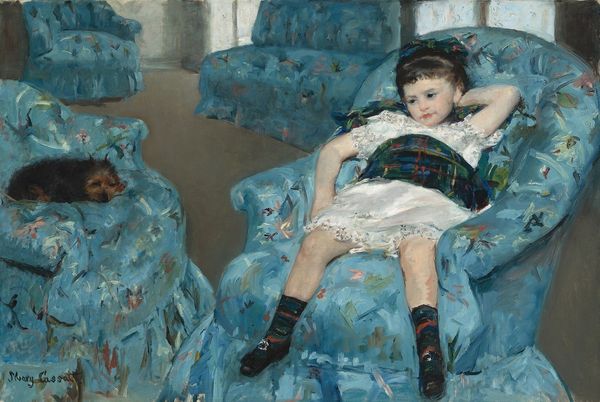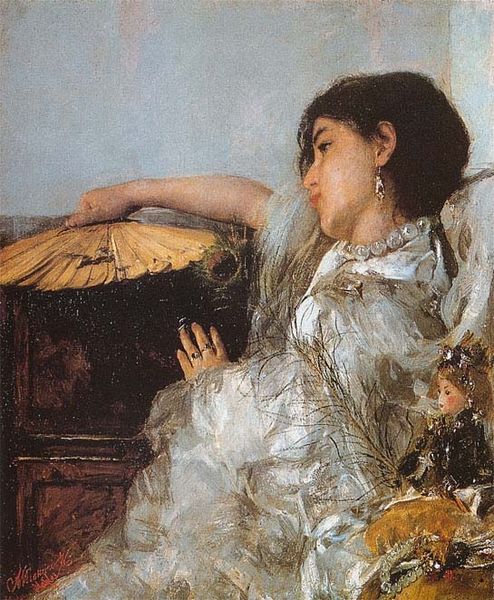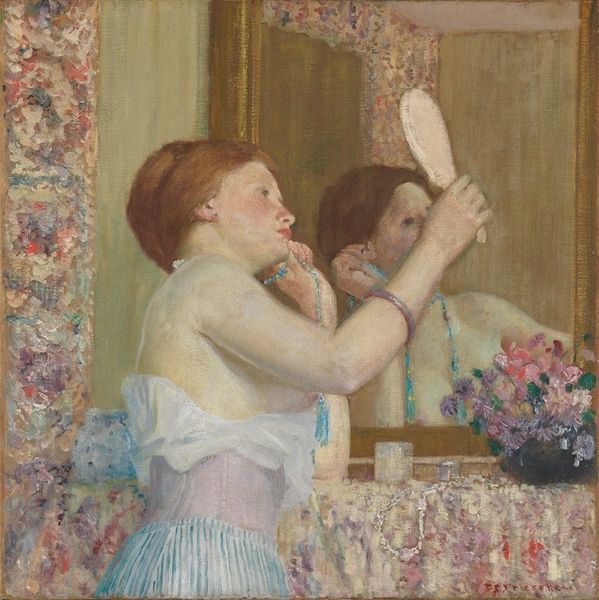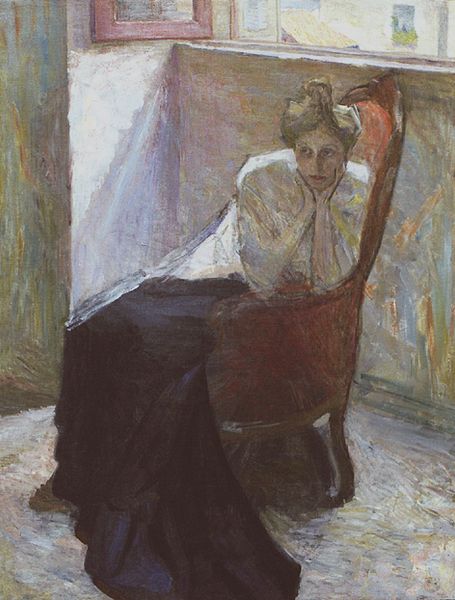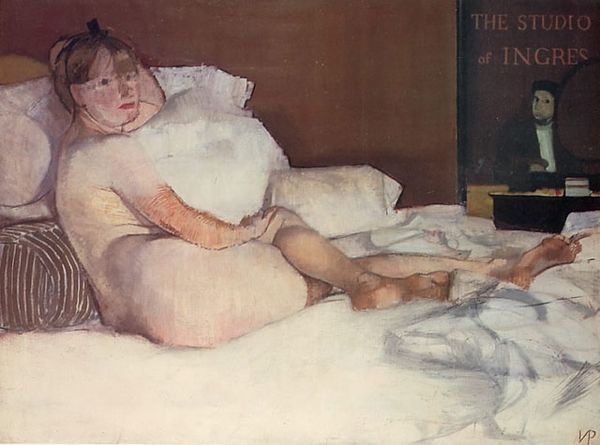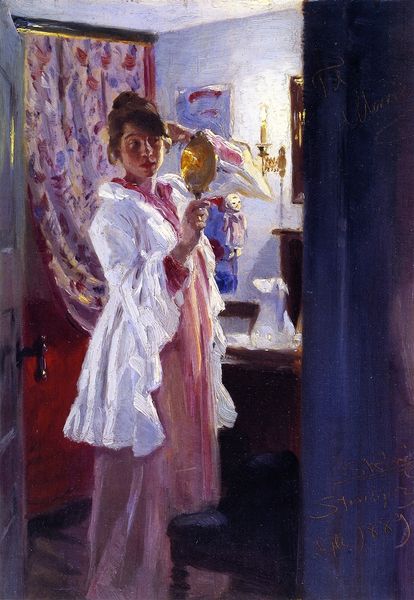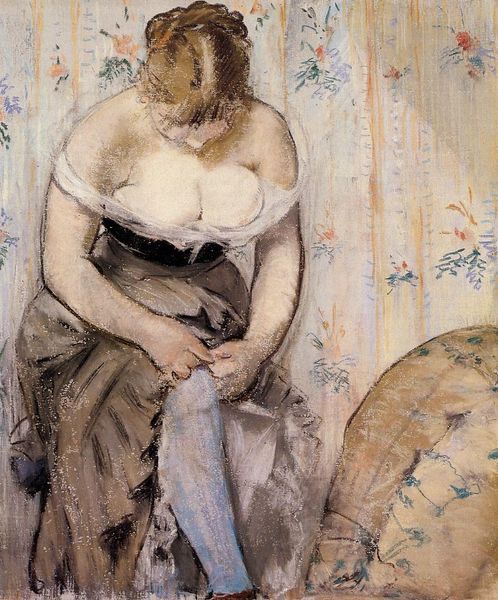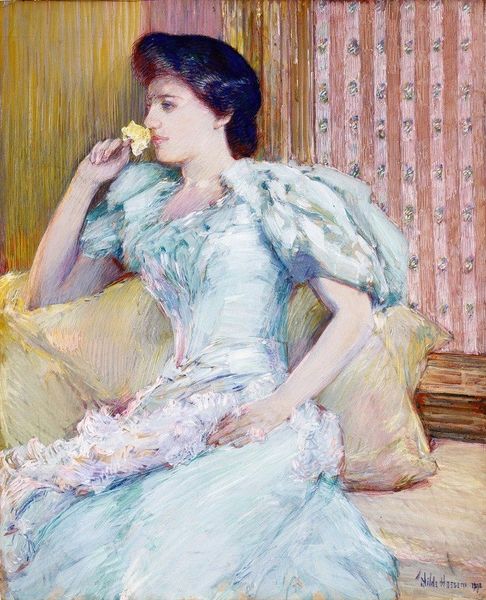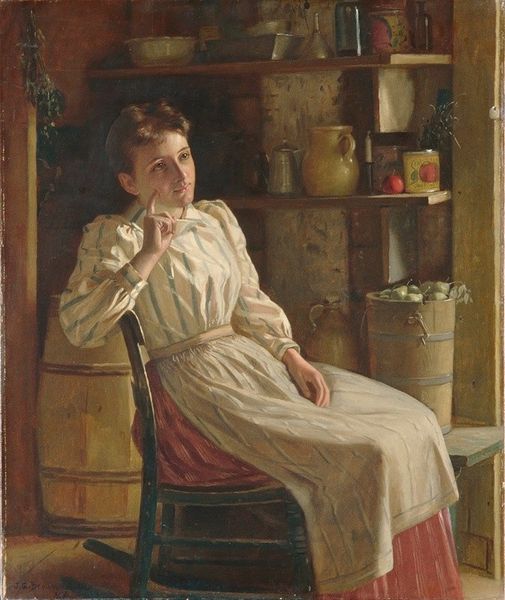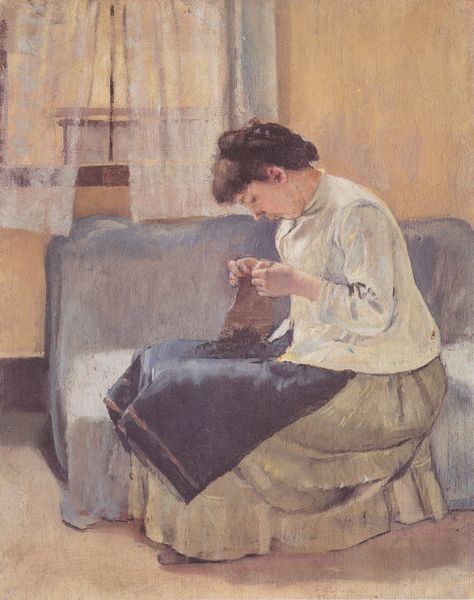
Copyright: Public Domain: Artvee
Curator: Oh, the tenderness in this scene! It's Mary Cassatt's "Girl Arranging Her Hair," painted around 1886 using oil on canvas. I find myself immediately drawn to the intimacy of this domestic tableau. Editor: It's undeniably serene, but also a touch voyeuristic, isn't it? That glimpse into a private ritual, the simple act of arranging hair… there's a certain deliberate "stagedness" to its casual presentation, which also has to do with the cultural reception to women painters... I mean, think about how Manet's Olympia had shocked the establishment just a couple of decades before. Curator: I see that. Perhaps Cassatt's genius lies in how she transforms an ordinary moment into something iconic. The girl’s gaze is averted, suggesting inner contemplation. Hair itself is ancient. It symbolizes vitality, power, sometimes even freedom. What does it suggest in the piece, do you think? Editor: Power… that’s an interesting take! It also reminds me how the female body has been consistently politicized throughout the late 19th and 20th centuries. You mention ancient symbolic connotations... in a Victorian society it surely references all the moral standards women are supposed to epitomize as the "domestic angels," if you think of the pre-Raphaelite. The composition itself pushes back from such interpretations: its seeming unpretentiousness gives it authenticity... it feels less charged compared to the mythological subjects, with their moral burden and dramatic charge... Curator: Yes, her art seems very grounded in a more contemporary understanding of womanhood. Think of her recurring use of mirrors and reflections. Editor: True! It adds another layer of meaning… the question of identity. Is it simply a practical act, arranging her hair? Or is Cassatt subtly questioning societal expectations around appearance and identity, but framed within the Impressionist values? After all, she participated actively in the movement at the invitation of Degas. It feels revolutionary, if not rebellious... Curator: I would not say it's revolutionary but the act of simply depicting this everydayness makes Cassatt’s images timeless. It allows each viewer to project their understanding onto that quiet scene. And ultimately, it's that continuity, that mirroring of the self, which makes this a lasting, resonant artwork. Editor: And also the light, texture, the way it plays on the materiality and everyday experiences in the modern life.... It speaks to the power of the intimate gesture and quiet observation, which ultimately allows Cassatt to make her work timeless.
Comments
No comments
Be the first to comment and join the conversation on the ultimate creative platform.
